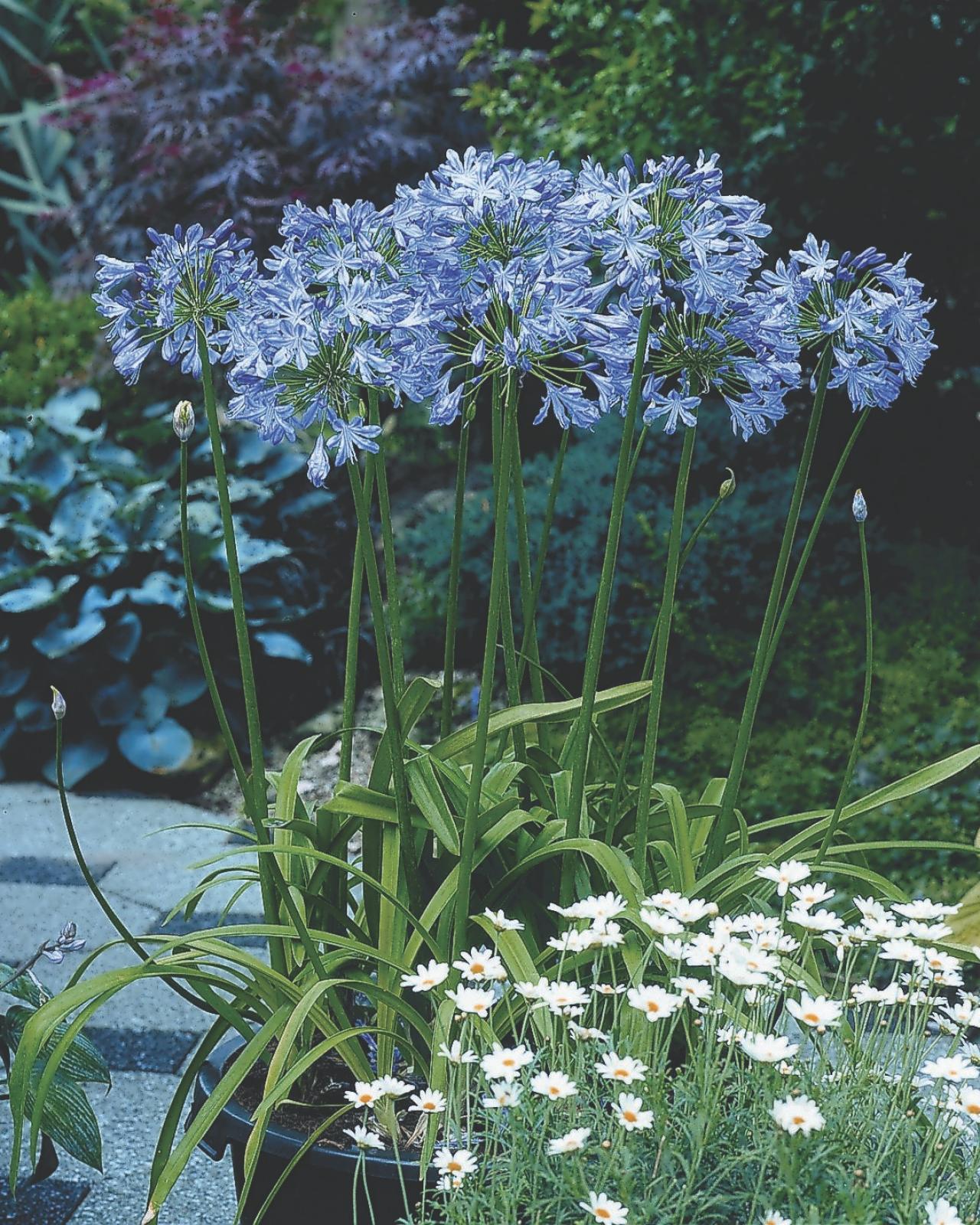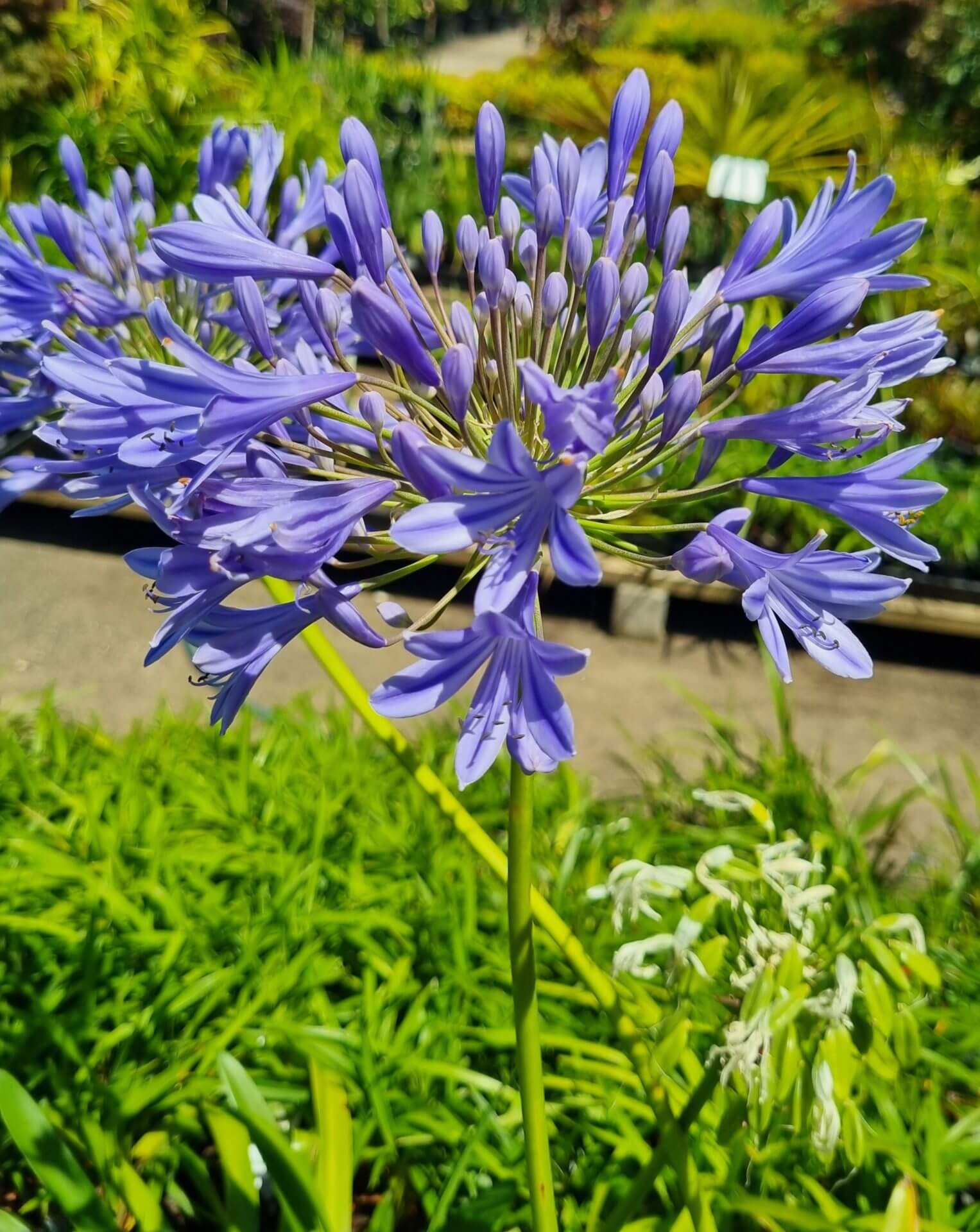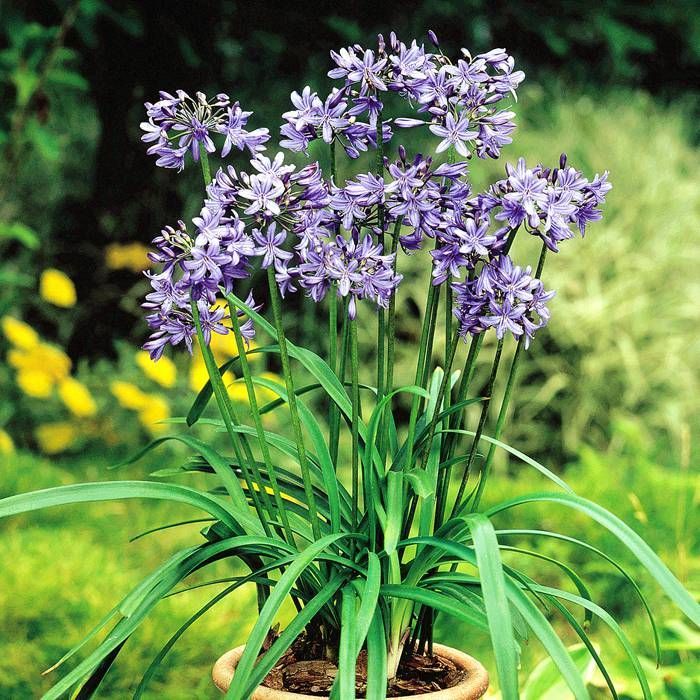Letting Loose the Secret to Effective Agapanthus Farming: Advice for a Flourishing Garden
In the realm of horticulture, cultivating agapanthus successfully requires a tactical technique that incorporates different facets of plant care. By recognizing the subtleties of agapanthus cultivation, one can create an atmosphere where these plants thrive and flower generously.
Planting Agapanthus: Ideal Practices
When growing Agapanthus, appropriate soil preparation is essential for ensuring effective growth and growth of these lovely flowers. Agapanthus, generally called Lily of the Nile or African lily, thrives in well-draining soil with a slightly acidic to neutral pH degree - Agapanthus. Before growing, it is essential to change heavy clay dirts with raw material such as compost or peat moss to boost drain and provide vital nutrients for the plants
To grow Agapanthus, select a location that receives full sunshine to partial shade, as this will certainly promote healthy and balanced development and plentiful blooming. Dig a hole two times the size of the plant's origin round and put the Agapanthus at the very same deepness it was previously expanding. Carefully backfill the opening with soil, pushing down strongly to get rid of any air pockets around the roots.
Water the freshly planted Agapanthus completely and remain to keep the dirt evenly damp, especially during the plant's active growing period. Agapanthus. Using a balanced fertilizer once a month can even more sustain the plant's development and blooming. By adhering to these finest techniques for growing Agapanthus, you can develop a magnificent display of these exciting blossoms in your yard
Perfect Dirt Conditions for Agapanthus
For optimal growth and blooming success of Agapanthus plants, ensuring the soil conditions are optimal is important. Agapanthus chooses soil that is abundant in nutrients, so including a well balanced fertilizer during the expanding period can promote healthy development and vivid blossoms.

Watering and Feeding Tips
To ensure healthy growth and lively blossoms, correct watering and feeding strategies are necessary for successful Agapanthus cultivation. Agapanthus plants gain from regular watering, especially during the growing season. It is recommended to water deeply as soon as a week, making certain the soil is damp yet not waterlogged. During hot climate or in pots, more regular watering might be essential to stop the dirt from drying entirely.
When it involves feeding Agapanthus, a balanced fertilizer with equivalent components nitrogen, phosphorus, and potassium can be used in the springtime to promote healthy growth and flowering. Slow-release plant foods are suitable for supplying nutrients slowly over an extended duration. Avoid over-fertilizing, as this can lead to too much foliage growth at the expenditure of flowers.
Additionally, including natural matter like compost into the dirt can improve nutrient levels and boost soil structure, aiding in the total health and wellness of the Agapanthus plants. By following these watering and feeding ideas, gardeners can guarantee their Agapanthus plants flourish and produce stunning display screens of flowers.
Trimming and Deadheading Methods
Correct pruning and deadheading strategies play a critical role in maintaining the wellness and looks of Agapanthus plants, matching the essential methods of watering and feeding for successful cultivation. Trimming Agapanthus look what i found involves eliminating invested flower heads, dead or yellowing fallen leaves, and general shaping of the plant to advertise much better growth. Deadheading, the procedure of getting rid of discolored flowers, not just improves the plant's look yet likewise urges further flowering.
When deadheading Agapanthus, it is recommended to trim off the flower stem at the base utilizing sharp, tidy shears. This procedure redirects the plant's energy from seed manufacturing back right into root and foliage growth, advertising a much healthier and much more durable plant. Normal deadheading can expand the blooming duration of Agapanthus and protect against self-seeding, which can lead to overcrowding.
In regards to trimming, Agapanthus usually gain from a light trim after blossoming to clean up the plant and motivate fresh growth. Cutting down the spent flower stems and removing any type of damaged or dead foliage helps maintain the plant's more info here vigor and overall appearance. Nonetheless, it is essential to avoid cutting into the crown of the plant, as this can weaken its health.

Protecting Agapanthus From Vermins and Diseases
Applying reliable bug and illness management strategies is crucial to protecting the health and vigor of Agapanthus plants in growing. Agapanthus are typically hardy plants, yet they can still succumb to numerous pests and conditions if not properly looked after. One typical pest that influences Agapanthus is the Agapanthus borer, a caterpillar that tunnels into the plant, creating damage to the blossoms and leaves. To stop invasions, regular examination of the plants is vital. If borers are detected, they can be by hand removed, or insecticidal soap can be made use of as a control step.
In enhancement to pests, Agapanthus are at risk to illness such as root rot and fungal leaf spots. These concerns can often be avoided by making certain proper drain and staying clear of overwatering. If signs of illness appear, impacted parts of the plant must be without delay removed to stop additional spread. Fungicides may also be utilized as a therapy measure, following the producer's directions very carefully. By remaining cautious and addressing insect and condition concerns promptly, gardeners can help Learn More their Agapanthus grow and thrive.

Final Thought
Finally, effective cultivation of agapanthus needs correct growing techniques, suitable soil conditions, ample watering and fertilizing, routine trimming and deadheading, and protection from bugs and conditions. By complying with these suggestions and methods, garden enthusiasts can ensure a flourishing yard full of attractive agapanthus blooms. Agapanthus. Keep in mind to keep regular care and interest to information to advertise the wellness and longevity of these sensational plants
When growing Agapanthus, correct dirt preparation is important for making sure effective development and growth of these beautiful flowers.Water the recently planted Agapanthus completely and continue to keep the soil uniformly damp, particularly throughout the plant's energetic expanding season.For optimum development and growing success of Agapanthus plants, making certain the dirt problems are excellent is crucial. When growing or transplanting Agapanthus, ensure the soil is well-prepared to give the required structure for the plants to develop themselves effectively. One typical bug that impacts Agapanthus is the Agapanthus borer, a caterpillar that tunnels into the plant, causing damages to the fallen leaves and flowers.